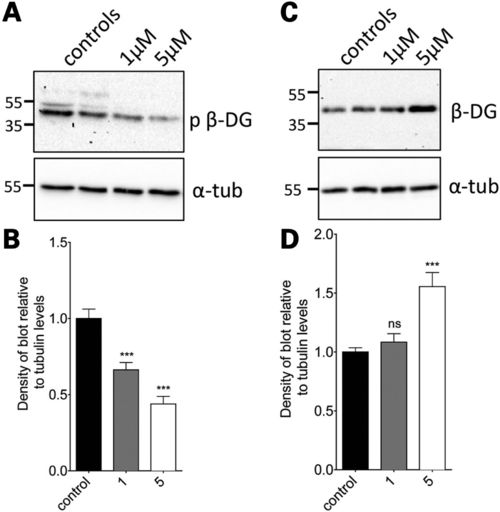
The effect of dasatinib treatment on levels of phosphorylated and non-phosphorylated β-dystroglycan in sapje zebrafish larvae. Lysates were made from sapje?/? embryos treated from 24 hpf until 96 hpf with dasatinib or DMSO-only. (A) Western blots probed with antibodies for p-β-DG and α-tubulin. (B) The density of the blot probed for p-β-DG was quantified relative to α-tubulin levels in each sample, and normalized to the average control signal. There is a significant decrease in the level of phosphorylated β-dystroglycan in larvae treated with dasatinib, compared with controls. (C) Western blots probed with antibodies for β-DG and α-tubulin. Numbers in (A and C) represent relative position of molecular weight markers in kDa. (D) The density of the blot probed against β-DG was quantified relative to α-tubulin levels in each sample, and normalized to the average control signal. There was a significant difference in the levels of β-DG in larvae between different treatment groups. Graphs show mean + SEM of at least six samples for each treatment, from three independent experiments. One-way ANOVA was carried out followed by Dunnett′s multiple comparison test (ns, non-significant; ***P < 0.001).
|

